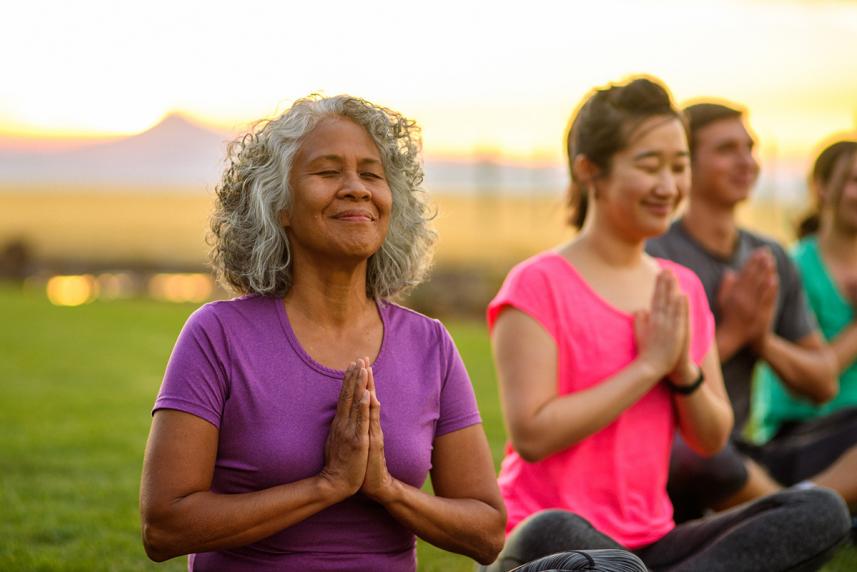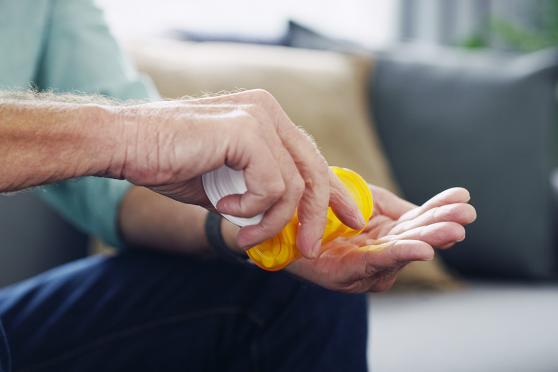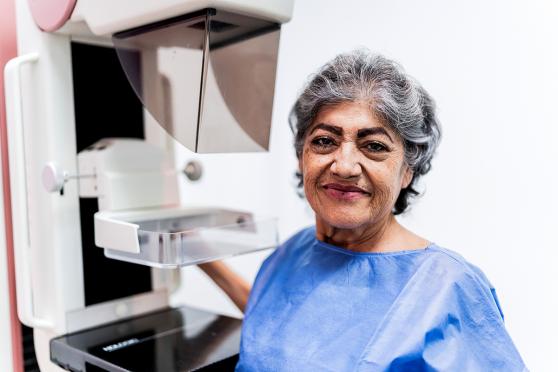It’s not too late to reduce your risk of breast cancer
Women over 65 are often diagnosed with this disease. Here’s how to lower your odds of being one of them.

Do you get a bit anxious at your yearly mammogram? That’s normal. Every year, hundreds of thousands of women in the United States find out they have breast cancer. And unfortunately, there are some risk factors people can’t change — including getting older.
According to the American Cancer Society (ACS), breast cancer occurs mostly in middle-aged and older women. Half of the women with breast cancer are diagnosed after age 63 and breast cancer rates are highest in women over 70.
When older women are diagnosed with breast cancer, it’s often — thankfully — relatively slow growing. “However, aggressive forms of breast cancer can occur at any age,” says Susan Brown, R.N. She’s the senior director of health information and publications at Susan G. Komen, the non-profit breast cancer organization.
The good news is that you can make changes to your health habits that may lower your risk. And it’s never too late to start. “Lifestyle choices aren’t related to age, so they still apply to women after age 65,” says Brown.
Here are steps older women can take to lower their risk of breast cancer.
Keep at a healthy weight
Breast cancer risk is related to both body weight and weight gain. Women who are overweight or obese after menopause have a higher risk of breast cancer, according to the National Cancer Institute.
Do you need to lose weight? Fill your plate with healthy foods such as fruits and vegetables, whole grains, lean proteins such as fish and chicken, and low-fat dairy. Your doctor can help you come up with a plan.

Automatic refills and our mail-order program are easy to set up and can save you money.
Be active
Exercise plays an important role in helping to prevent breast and other cancers. Get at least 150 minutes of moderate-intensity aerobic activity every week. That’s about 30 minutes five days a week. Anything that gets your heart rate going counts. Some ideas:
- Go for a power walk with a friend.
- Take a dance class.
- Play pickleball.
- Do yard work.
- Go for a bike ride with your grandkids.
You should also do muscle-strengthening activities at least twice a week. Try lifting weights at the gym or do resistance exercises that use your own body weight. Good options include push-ups, squats, sit-ups, and planks.
Eat less red meat
Cutting back on red meat such as beef, pork, veal, and lamb may decrease your breast cancer risk, says the Breast Cancer Research Foundation. Try plant-based sources of protein such as beans, lentils, and nuts.
Limit alcohol
Drinking even small amounts of alcohol is linked with an increased risk of breast cancer in women, according to the ACS. Consider cutting back on how often and how much you drink. If you drink, keep it to one drink a day or less. Or think about stopping completely.
Talk with your doctor if you’ve had hormone therapy treatment
Hormone therapy can help relieve symptoms of menopause. But it can also increase the risk of breast cancer. Women who use or used estrogen plus progestin hormone therapy — as opposed to just estrogen alone — are at higher risk, according to the breast cancer organization Susan G. Komen.
“Older women who have taken hormone therapy should discuss this as part of their medical history with their doctors,” says Brown. “This can help inform their risk and the screening plan that’s right for them.”
Know your family history
Has your mother, sister, or aunt been diagnosed with breast cancer? Talk to your doctor about other ways you can lower your risk. Genetic testing is not generally recommended for most older women. But you may want to bring it up with your provider.
Schedule your annual mammogram
Mammograms are super important for women age 40 and over. A mammogram is an X-ray of your breasts that can detect cancer in its earliest stage when it’s easier to treat. Regular screening mammography also lowers the risk of dying from breast cancer, says Brown.
The U.S. Preventive Services Task Force recommends that women get a mammogram every two years starting at age 40 until they’re 74. Annual mammogram screenings are a benefit of your HMSA plan. Talk with your doctor to determine the screening schedule that’s right for you.
Know what’s normal for your breasts and call your doctor if something feels different
While mammograms can help spot breast cancer, you should still be checking your breasts regularly. Don’t rely on your annual screening alone. “Any change noted in the breast or underarm areas should be reported to a doctor,” says Brown.
These are some common signs and symptoms of breast cancer:
- A new lump in the breast or armpit
- Thickening, swelling, warmth, redness, or darkening of the breast
- Puckering or dimpling of the breast skin
- Itchiness, a scaly sore, or a rash on the nipple area
- Pulling in of the nipple or other parts of the breast
- Nipple discharge, including blood
- Any change in the size or shape of the breast
- New pain in any area of the breast that doesn’t go away
Not sure if it’s something to worry about? Have your doctor check it out to give you peace of mind.
Additional sources:
Breast cancers stats: American Cancer Society
Overweight; hormone therapy: National Cancer Institute
Cutting back on red meat: Breast Cancer Research Foundation
Limiting alcohol: American Cancer Society
Hormone therapy and breast cancer: Susan G. Komen
Screening guidelines: U.S. Preventive Services Task Force; American Cancer Society
Medicare coverage of mammograms: Centers for Medicare & Medicaid Services
Breast cancer symptoms: Centers for Disease Control and Prevention
H3832_8750_5MS547_24_C
© 2023, Linkwell Health, Inc. All content owned or licensed by Linkwell Health, Inc. All rights reserved.


